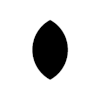Tattva vision: Difference between revisions
→External links: rm spamlink |
|||
| Line 66: | Line 66: | ||
* [http://www.a-m-h-r.org/members/gcl/tattwas.html What Tattwas Are & Uses for the Aspirant in Developing Psychic Energy] |
* [http://www.a-m-h-r.org/members/gcl/tattwas.html What Tattwas Are & Uses for the Aspirant in Developing Psychic Energy] |
||
* [http://www.osogd.org/ Open Source Order of the Golden Dawn] Various ''Flying Rolls'' on Tattva usage |
* [http://www.osogd.org/ Open Source Order of the Golden Dawn] Various ''Flying Rolls'' on Tattva usage |
||
* [http://www.esotericgoldendawn.com Tattva usage in the Golden Dawn] |
|||
[[Category:Samkhya]] |
[[Category:Samkhya]] |
||
Revision as of 05:36, 31 January 2006
There are six main schools of thought on Tattvic philosophy. The original Tattva system was developed by the Indian Maharshi Kapila as part of his Samkhya philosophy. This was about 700BCE, but the roots of Tattvic philosophy go back to at least 2000BCE. Kapila's Samkhya philosophy system divides the universe into five basic Tattvic shapes, which when countercharged become 25 Tattvas.
The word Tattva is comprised of two words, Tat (meaning that) and Tvam (meaning thou). Tattva basicially means thatness, that is, the real being of anything. It is generally translated as meaning quality. Further, Tat represents the Godhead and Tvam the individual, giving a meaning (which fits in well with Hermetic Philosophy) of "That (which is the Universe) art thou." This is similar to the Hermetic axiom of "As above, so below", and is directly related to the concepts of the Macrocosm (Tat, Godhead) and Microcosm (Tvam, individual).
The Hatha Yoga School of Tattvic Philosophy links the energy found in breathing (Prana) with the cycle of the five Tattvas. The eighth chapter of the Shivagama is The Science of Breath and the Philosophy of the Tattvas. It is written within this work that "The Universe came out of the Tattvas; it goes on by the instrumentality of the Tattvas; it disappears into the Tattvas; by the Tattvas is known the nature of the Universe."
The Tattvas are the five modifications of the Great Breath, Prana, which is described as the life principle of the Universe (macrocosm) and man (microcosm). Prana consists of an ocean of the five Tattvas.
The Buddhist texts of Indian Tantra describe 7 energy centres (chakras) in connection with the five Tattvas. This finds its ultimate refinement in the Tibetan Buddhist fivefold chakra system, which is part of their fivefold division of esoteric symbolism for categorising the Universe. The Tattvas correspond to the five lower chakras in the Indian scheme of energy centres, and to all five psychic centres of the Tibetan chakra scheme.
Each Tattva cycle takes approximately two hours to transit over a given spot. Each complete Tattva flow itself occupies 24 minutes transit time. Each complete Tattva is divided into five sub Tattvum and these each take about 4 minutes and 48 seconds to transit a given spot.
The use of Tattva Vision is to aid with the development of the faculty of astral clairvoyance. It is considered one of the easiest, fastest and most effective methods of exercising and enhancing the clairvoyant factor.
The astral forms of the Tattva and equivalent in Western elements:
The Tattva symbols
Akasha - Spirit

 black vesica Pisces / black egg
black vesica Pisces / black egg
Tejas - Fire
 red equilateral triangle
red equilateral triangle
Vayu - Air Vayu Tattva blue circle
Apas - Water

 purple half circle / silver crescent
purple half circle / silver crescent
Prithivi - Earth
 yellow square
yellow square
Constructing Tattva Cards
Tattva cards can be constructed by cutting the Tattva symbols out of coloured paper or card, and pasting on to small cards of about 6 inches by 6 inches in size. Alternatively the Tattva symbols may be painted onto the cards, or a commercial set of cards may be obtained.
See also
- Tattva
- Astral body
- Esotericism
- Lucid dreaming
- Metaphysics
- Mysticism
- New Age
- Occultism
- Out of body experience
- Remote Viewing
- Subtle body
- Holotropic Breathwork
References
- Frater A.M.B., et. al, Discipulus Inceptor (H.O.M.C., 1999) Privately published
- Regardie, Israel, et. al., eds., The Golden Dawn: A Complete Course in Practical Ceremonial Magic (Llewellyn, 1989) ISBN 0875426638
- Mumford, John , Magical Tattwa Cards (Llewellyn, 1997) ISBN 1567184723
- Prasad, Rama, Nature's Finer Forces: The Science of Breath and the Philosophy of the Tattvas (Kessinger, 1997) ISBN 1564598039
- Fletcher, Ella A., Law of the Rhythmic Breath: Teaching the Generation, Conservation, and Control of Vital Force (Kessinger, 1997) ISBN 156459839X
- Ramacharaka Yogi, Science of Breath (Kessinger, 1997) ISBN 156459744X
